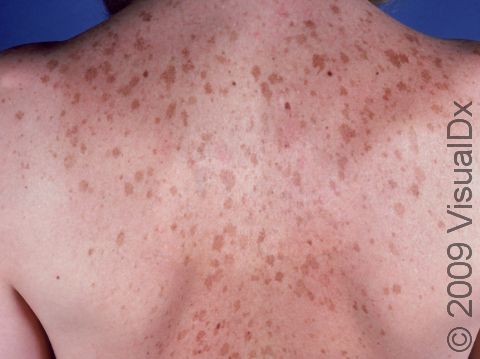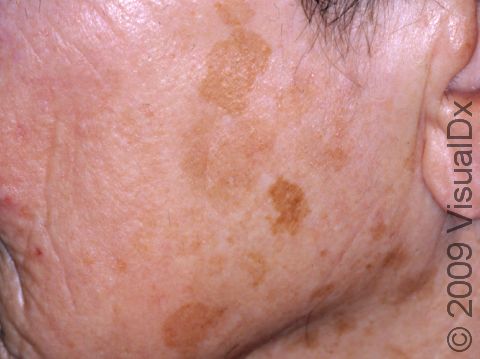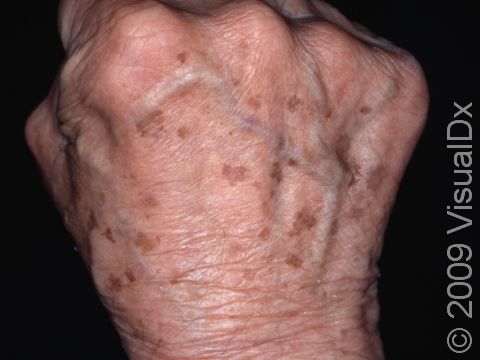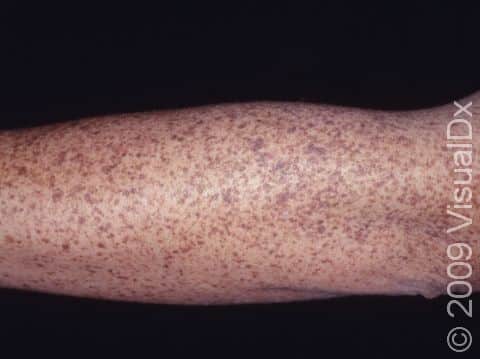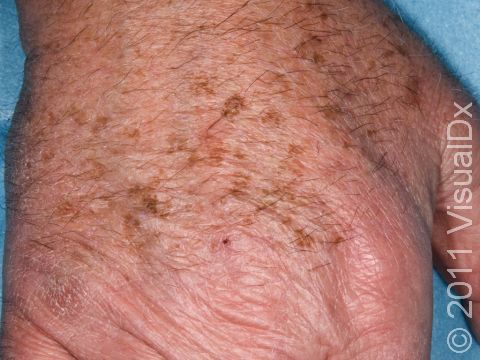Solar Lentigo
A solar lentigo (plural, solar lentigines), also known as a sun-induced freckle or senile lentigo, is a dark (hyperpigmented) lesion caused by natural or artificial ultraviolet (UV) light. Solar lentigines may be single or multiple. This type of lentigo is different from a simple lentigo (lentigo simplex) because it is caused by exposure to UV light. Solar lentigines are benign, but they do indicate excessive sun exposure, a risk factor for the development of skin cancer.
Who's At Risk?
Solar lentigines most commonly occur in older adults, particularly those who sunburn easily and fail to tan, but they may also occur in children.
Signs & Symptoms
Solar lentigines typically appear on areas exposed to natural or artificial UV light. They appear as well-defined, light brown to black, flat spots. In people who have been treated with a form of UV light therapy called PUVA, solar lentigines may occur in areas of the skin not exposed to UV light.
Self-Care Guidelines
To prevent solar lentigines, avoid exposure to sunlight in midday (10 AM to 3 PM), wear sun-protective clothing (tightly woven clothes and hats), and apply sunscreen (SPF 30 UVA and UVB block).
Treatments
If solar lentigines are cosmetically bothersome, your physician may:
- Freeze the area lightly with liquid nitrogen.
- Prescribe a bleaching cream (hydroquinone), but this is often not successful.
Visit Urgency
Solar lentigines do not require medical therapy, but see a physician for evaluation if they become cosmetically bothersome or if you are uncertain about any pigmented spot on your body.
Trusted Links
References
Bolognia, Jean L., ed. Dermatology, pp.983, 1760-1761. New York: Mosby, 2003.
Freedberg, Irwin M., ed. Fitzpatrick’s Dermatology in General Medicine. 6th ed, pp.721, 823, 863-865, 888-889. New York: McGraw-Hill, 2003.
Last modified on October 5th, 2022 at 7:59 pm

Not sure what to look for?
Try our new Rash and Skin Condition Finder
